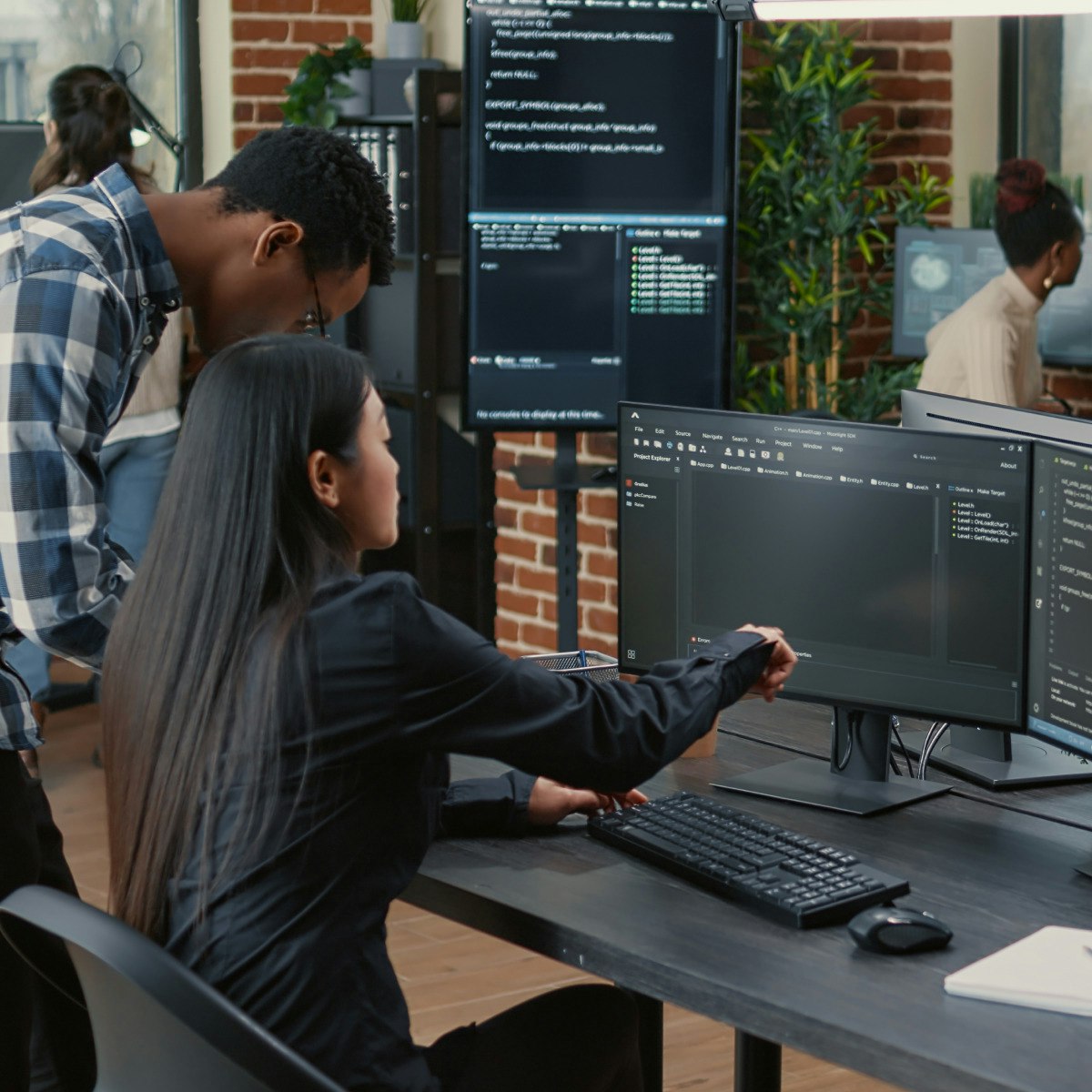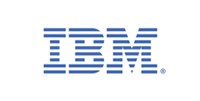
Take the next step in your IT professional journey with this self-paced, beginner friendly course! This course covers the basics of software, cloud computing, web browsers, application development concepts, programming languages, and database fundamentals.
You will first be introduced to computing platforms and software applications. You’ll learn about the software lifecycle, software compatibility across different platforms, and software versioning. You'll also learn about installing and managing web browsers, using extensions and plug-ins, and keeping them secure and updated.
Read more
Take the next step in your IT professional journey with this self-paced, beginner friendly course! This course covers the basics of software, cloud computing, web browsers, application development concepts, programming languages, and database fundamentals.
You will first be introduced to computing platforms and software applications. You’ll learn about the software lifecycle, software compatibility across different platforms, and software versioning. You'll also learn about installing and managing web browsers, using extensions and plug-ins, and keeping them secure and updated.
Take the next step in your IT professional journey with this self-paced, beginner friendly course! This course covers the basics of software, cloud computing, web browsers, application development concepts, programming languages, and database fundamentals.
You will first be introduced to computing platforms and software applications. You’ll learn about the software lifecycle, software compatibility across different platforms, and software versioning. You'll also learn about installing and managing web browsers, using extensions and plug-ins, and keeping them secure and updated.
Next you will learn about basic programming concepts, coding logic, and the different programming languages like Python. You’ll move on to data and database fundamentals and learn how to use, interface with, access and backup databases.
After completing this course, you'll have a better grasp of software processes and feel more confident about using and securing applications. From mobile phone operating systems to workplace database applications, this course covers a wide range of software. Discover the benefits of cloud-based technologies and see how using the cloud can help businesses create and deploy applications faster.
To solidify your understanding and put your skills to the test, the course includes numerous hands-on labs. It ends with a final project where you’ll showcase your newfound expertise and demonstrate your understanding of software, programming, and databases.
Enroll now to take the next step in developing expertise in IT Fundamentals.
What's inside
Syllabus
Computing Platforms and Software Applications
Do you know which computing platform is on your device? Are you using the right software for the task you're tackling? Are your software versions updated? This course will help you answer these questions by giving you a better understanding of the essentials of software and by showing you how to effectively manage programs and applications.
In this module, you will learn about computing platforms, single- and cross-platform software, compatibility across platforms, and software versioning. You will learn about the differences between commercial and open source software, while also learning about different types of software and file formats.
Read more
Syllabus
Good to know
Save this course
Activities
Organize Course Resources
Show steps
Maximize productivity and retention by keeping all course materials organized and easily accessible
Show steps
-
Create a dedicated folder or notebook
-
Gather and save all course materials (e.g., notes, slides, assignments)
-
Organize materials by topic or module
Connect with Industry Professionals
Show steps
Gain insights and guidance from experienced professionals in the field of IT
Show steps
-
Attend industry events or meetups
-
Reach out to professionals on LinkedIn
-
Attend workshops or conferences
Review Intermediate Python Concepts
Show steps
Strengthen Python skills before the course to facilitate easier learning of advanced concepts
Browse courses on
Python
Show steps
-
Identify areas for improvement
-
Review online resources or textbooks
-
Practice solving coding problems
Six other activities
Expand to see all activities and additional details
Show all nine activities
Join a Study Group
Show steps
Enhance understanding and retention by collaborating and discussing course material with peers
Show steps
-
Find or create a study group
-
Set regular meeting times
-
Discuss course material
-
Solve problems and work on assignments together
Follow Online Tutorials for Cloud Computing
Show steps
Gain a hands-on understanding of cloud computing concepts and platforms
Browse courses on
Cloud Computing
Show steps
-
Search for online tutorials on cloud computing
-
Choose a tutorial that aligns with your interests
-
Follow the tutorial step-by-step
-
Experiment with the cloud platform or service
Practice Coding Challenges
Show steps
Exercise the skills and concepts covered in the course and develop proficiency in coding
Browse courses on
Programming Concepts
Show steps
-
Identify a coding challenge platform
-
Select coding challenges of varying difficulty
-
Attempt to solve the challenges on your own
-
Review solutions and learn from mistakes
Write a Blog Post on IT Fundamentals
Show steps
Enhance understanding by explaining and summarizing key concepts in IT Fundamentals
Browse courses on
IT Fundamentals
Show steps
-
Choose a specific topic related to IT fundamentals
-
Research and gather relevant information
-
Organize your thoughts and outline the blog post
-
Write the blog post in a clear and concise manner
-
Share the blog post on social media or other platforms
Develop a Web Application
Show steps
Apply the principles of web development and create a functioning web application
Browse courses on
Web Development
Show steps
-
Plan the application's functionality and design
-
Choose appropriate programming languages and tools
-
Build the application's frontend and backend
-
Test and debug the application
-
Deploy the application on a web server
Build a Personal Portfolio Website
Show steps
Gain practical experience and showcase your skills by creating a professional online presence
Browse courses on
Web Development
Show steps
-
Set up a domain and hosting
-
Design and develop the website's layout
-
Add content and showcase your projects
-
Optimize the website for SEO
Organize Course Resources
Show steps
Maximize productivity and retention by keeping all course materials organized and easily accessible
Show steps
- Create a dedicated folder or notebook
- Gather and save all course materials (e.g., notes, slides, assignments)
- Organize materials by topic or module
Connect with Industry Professionals
Show steps
Gain insights and guidance from experienced professionals in the field of IT
Show steps
- Attend industry events or meetups
- Reach out to professionals on LinkedIn
- Attend workshops or conferences
Review Intermediate Python Concepts
Show steps
Strengthen Python skills before the course to facilitate easier learning of advanced concepts
Browse courses on
Python
Show steps
- Identify areas for improvement
- Review online resources or textbooks
- Practice solving coding problems
Join a Study Group
Show steps
Enhance understanding and retention by collaborating and discussing course material with peers
Show steps
- Find or create a study group
- Set regular meeting times
- Discuss course material
- Solve problems and work on assignments together
Follow Online Tutorials for Cloud Computing
Show steps
Gain a hands-on understanding of cloud computing concepts and platforms
Browse courses on
Cloud Computing
Show steps
- Search for online tutorials on cloud computing
- Choose a tutorial that aligns with your interests
- Follow the tutorial step-by-step
- Experiment with the cloud platform or service
Practice Coding Challenges
Show steps
Exercise the skills and concepts covered in the course and develop proficiency in coding
Browse courses on
Programming Concepts
Show steps
- Identify a coding challenge platform
- Select coding challenges of varying difficulty
- Attempt to solve the challenges on your own
- Review solutions and learn from mistakes
Write a Blog Post on IT Fundamentals
Show steps
Enhance understanding by explaining and summarizing key concepts in IT Fundamentals
Browse courses on
IT Fundamentals
Show steps
- Choose a specific topic related to IT fundamentals
- Research and gather relevant information
- Organize your thoughts and outline the blog post
- Write the blog post in a clear and concise manner
- Share the blog post on social media or other platforms
Develop a Web Application
Show steps
Apply the principles of web development and create a functioning web application
Browse courses on
Web Development
Show steps
- Plan the application's functionality and design
- Choose appropriate programming languages and tools
- Build the application's frontend and backend
- Test and debug the application
- Deploy the application on a web server
Build a Personal Portfolio Website
Show steps
Gain practical experience and showcase your skills by creating a professional online presence
Browse courses on
Web Development
Show steps
- Set up a domain and hosting
- Design and develop the website's layout
- Add content and showcase your projects
- Optimize the website for SEO
Career center
Database Administrator
Database Manager
Software Developer
Data Analyst
Software Tester
Information Security Analyst
Network Administrator
Web Developer
Systems Analyst
IT Project Manager
Business Analyst
IT Consultant
Computer and Information Research Scientist
Technical Writer
Computer Support Specialist
Reading list
Share
Similar courses
OpenCourser helps millions of learners each year. People visit us to learn workspace skills, ace their exams, and nurture their curiosity.
Our extensive catalog contains over 50,000 courses and twice as many books. Browse by search, by topic, or even by career interests. We'll match you to the right resources quickly.
Find this site helpful? Tell a friend about us.
We're supported by our community of learners. When you purchase or subscribe to courses and programs or purchase books, we may earn a commission from our partners.
Your purchases help us maintain our catalog and keep our servers humming without ads.
Thank you for supporting OpenCourser.



